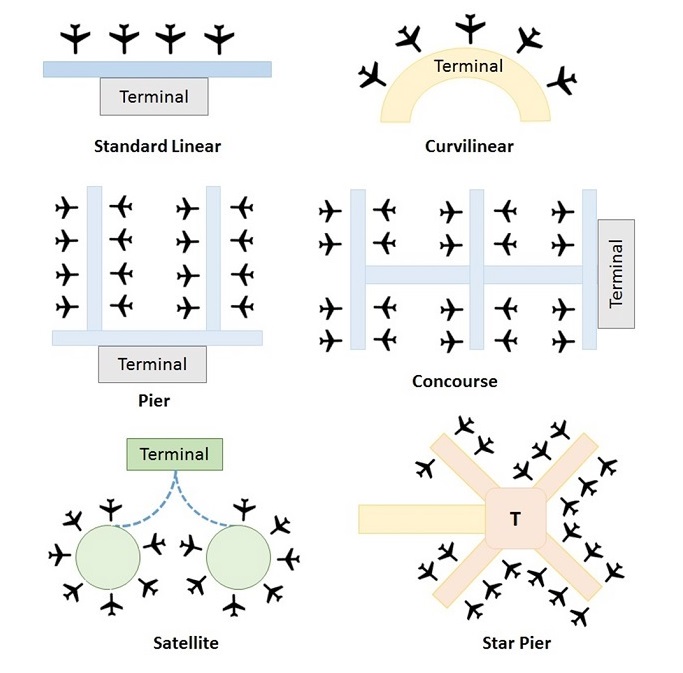It involves planning, designing, and construction of terminals, runways, and other ancillary facilities for airlines to operate. Developing an airport requires huge amount of capital and anticipation of future growth of airlines and passengers. AAI is responsible for the development of airports in India.
Airport Designing
Airport projects are involved with many considerations and issues hence they are highly collaborative. Designing of airport is taken up by architectural firms. The architects work in collaboration with civil engineers to come up with the Airport Layout Plans. The experts come up with master plans which is referred to for further developments.
Planning an Airport
To plan an airport, the AAI is concerned for three approvals −
- Technical Approvals
- Review and approve Airport Layout Plan (ALP).
- Review and acceptance of forecast.
- Airspace and procedure changes.
- Land acquisition.
- Financial Approvals
- Funding for the airport is approved once the project gets clearance for safety, security, capacity, and airport access systems.
- Environmental Approvals
- Review and assess environmental issues.
- Find out solutions to address the environmental problems.
Airport planning is vital to understand problems and potential environmental issues. Out of the reactive and proactive planning methods, an appropriate planning method is selected depending upon the requirement.
Airport Development
It includes the development of the land to build the terminals and base, and building the infrastructure for the ancillary facilities. All the infrastructural development is done in accordance with the ICOA standards.
Airport − Terminal Planning
The following criteria need to be considered while planning and designing a terminal −
- Passenger flow and traffic peaking.
- Minimum walking distance.
- Level of service for passengers and sophistication.
- Performance standards.
- Area for Retailers: Duty free shops, food joints, and spas.
- Area for Facility points such as Restrooms, ATM machines, and kiosks.
- Easy access to retail area and facility points.
- Compatibility of facilities with aircraft characteristics.
- Ability to handle changes in technology and automation.
- Expandability for future growth.
- Area and processing time for checking-in, immigration/customs clearance, baggage security screening, and baggage delivery.
Airport − Terminal Configurations
The following configurations are adapted while designing the airport terminals −

Examples of Airport Layouts
The following table provides a few examples of airports designed on the basis of the given layouts −
| Layout | Airport |
|---|---|
| Standard Linear | Detroit Métropolitain (DTW) |
| Curvilinear | Munich (MUC) |
| Pier | Amsterdam (AMS), Chitose Airport Japan (CTS), Los Angeles (LAX). |
| Concourse | Atlanta International Airport (ATL), Al Maktoum International Airport Dubai (DWC), O’Hare International Airport Chicago (ORD) |
| Star Pier | Geneva Airport Switzerland (GVA), Orlando International Airport, Florida (MCO). |

Thanks for Related My Informations and pls visit my website
ReplyDeletemco spirit terminal
what terminal is spirit